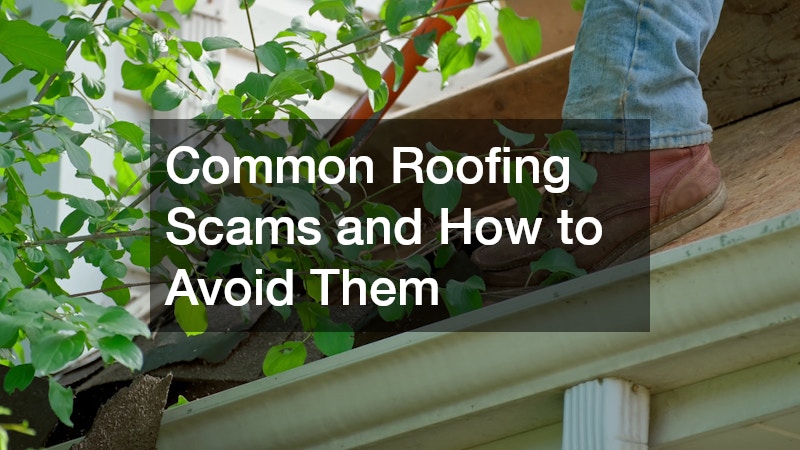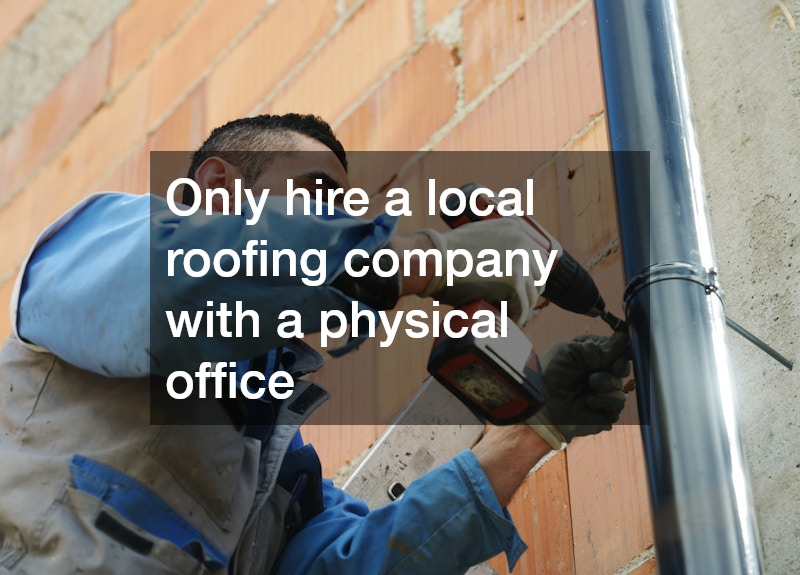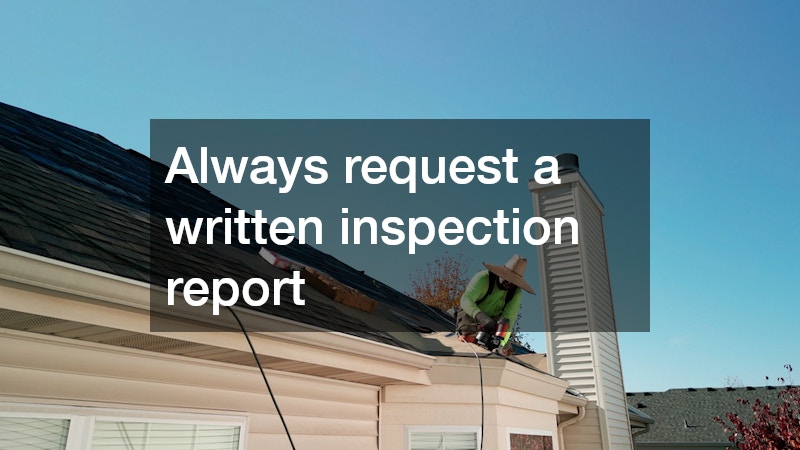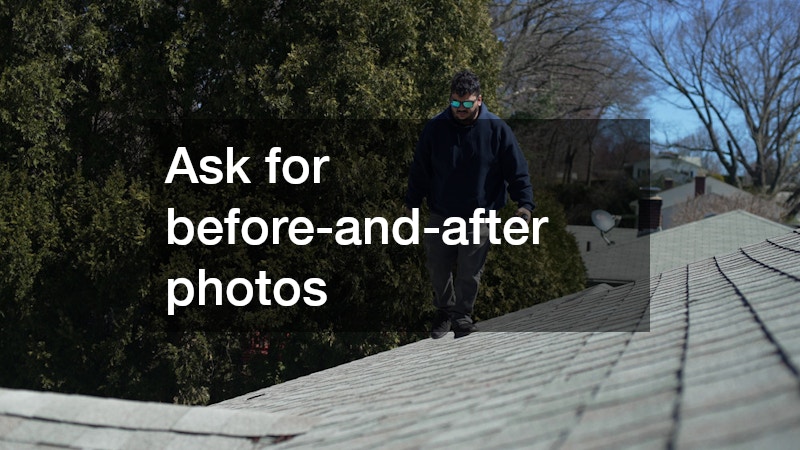
Key Takeaways:
-
Always hire a local, licensed, and insured roofing company with a verifiable business address and strong customer reviews.
-
Avoid door-to-door contractors and high-pressure sales tactics—take time to compare multiple written estimates.
-
Never pay the full amount upfront; use a milestone payment schedule and traceable payment methods.
-
Verify all credentials, including business licenses, insurance certificates, and manufacturer certifications.
-
Be cautious of anyone offering to “waive your deductible” or handle your insurance claim illegally.
-
Always request detailed contracts and written inspection reports with photos before agreeing to repairs.
-
If you suspect fraud, stop payments immediately and report the roofing company to consumer protection agencies or licensing boards.

Finding a trustworthy roofing company can be a challenge, especially when you’re dealing with leaks, missing shingles, or storm damage. Unfortunately, these stressful situations often make homeowners easy targets for roofing scams. Every year, thousands of homeowners lose money to fake contractors posing as professionals or to unethical companies that perform low-quality work, disappear with deposits, or manipulate insurance claims.
Knowing how to spot these red flags before you sign any contract is essential for protecting your home and your budget. In this guide, we’ll discuss the most common roofing scams, how to verify a roofing company’s legitimacy, and what steps to take if you’ve been targeted. Whether you’re hiring a roofing company for minor repairs or a full roof replacement, understanding these warning signs can save you from major financial loss.
Why Roofing Scams Are So Common
Roofing is one of the most expensive and essential parts of home maintenance. That’s exactly why dishonest contractors and fly-by-night roofing companies are drawn to it.
Here are the main reasons roofing scams continue to thrive in the home improvement industry:
-
High demand and urgency: Roofing problems like leaks or storm damage require immediate action. Scammers know that when water is dripping into your living room, you’ll call the first roofing company that answers the phone—often without verifying credentials.
-
Lack of roofing knowledge: Many homeowners don’t understand roofing materials, pricing, or repair timelines. A dishonest roofing contractor can take advantage by inflating costs or recommending unnecessary services.
-
Post-storm chaos: After hurricanes, hailstorms, or tornadoes, entire neighborhoods are desperate for repairs. This attracts out-of-town crews—often called “storm chasers”—who exploit urgency and confusion.
-
Inconsistent licensing laws: Not every region requires roofing companies to be licensed or insured. This allows unqualified or fake contractors to pose as professionals.
A professional roofing company builds its reputation through transparency, licensing, and consistent communication. Scam artists rely on urgency, confusion, and emotional pressure.
The Most Common Roofing Scams (and How to Avoid Them)
Understanding how these scams work gives you the power to stop them before they start. Below are the most widespread roofing scams—each explained with warning signs and practical steps you can take.
1. The “Storm Chaser” Scam
Storm chasers are transient roofing crews that follow severe weather patterns, knocking on doors and offering fast, cheap roof repairs. They usually appear right after hail, wind, or hurricane damage.
How the scam works:
-
They claim to represent a well-known roofing company or say they are “authorized contractors” working with your insurance.
-
They promise quick repairs at low prices to “help storm victims.”
-
They pressure you to sign a contract immediately before they “move to the next neighborhood.”
-
After collecting a deposit, they disappear—or worse, perform substandard work with no local warranty support.
Red flags to watch for:
-
The contractor is not based locally and cannot provide a verifiable business address.
-
Their vehicle has out-of-state plates or no company branding.
-
They ask for immediate payment before materials are delivered.
-
Their phone number is a prepaid mobile or temporary line.
How to protect yourself:
-
Only hire a local roofing company with a physical office, local phone number, and strong community reputation.
-
Verify business registration through your local licensing agency or consumer affairs office.
-
Read online reviews from established platforms like Google or the Better Business Bureau.
-
Ask for at least three local references and check whether they were satisfied with the company’s workmanship and communication.
A reputable roofing company doesn’t need to knock on doors after every storm—they earn business through quality work and word-of-mouth.

2. High-Pressure Sales Tactics
Another common issue occurs when a roofing company uses aggressive or manipulative sales tactics. The salesperson may insist that you sign immediately or risk losing a “limited-time offer.”
How this scam works:
-
The representative claims they’re offering a special discount only if you commit today.
-
They may bring contracts or tablets to your home, urging you to sign before reading.
-
They avoid answering detailed questions about warranties, materials, or timelines.
-
Some even use guilt tactics, suggesting you’re irresponsible if you “let your home deteriorate.”
Warning signs:
-
Phrases like “This deal ends today” or “We only have enough materials for one more job.”
-
Pressure to sign before you’ve received other estimates.
-
Refusal to leave written estimates behind for review.
How to protect yourself:
-
Get at least three written estimates from different roofing companies for comparison.
-
Take your time—no legitimate roofing contractor will rush you into signing.
-
Read every line of the contract before committing, and ensure it includes scope of work, payment terms, and warranty details.
-
Be cautious of any roofing company that refuses to let you review documents privately.
A trustworthy roofing company understands that home improvements are major decisions and gives homeowners space to make informed choices.
3. The Upfront Payment Disappearing Act
Some scammers request a large upfront payment “to buy materials,” only to vanish after cashing your check.
How it typically unfolds:
-
The roofing company claims materials must be purchased immediately due to “rising costs.”
-
They request a 50%–100% down payment before starting.
-
After receiving payment, they delay repeatedly or disappear altogether.
Red flags:
-
No contract, or a vague agreement without itemized costs.
-
Pressure to pay in cash or via wire transfer.
-
Excuses like “Our supplier requires full payment first.”
How to protect yourself:
-
Never pay more than 10–30% upfront, depending on project size.
-
Use traceable payment methods such as checks or credit cards.
-
Insist that payments follow a milestone schedule—partial payments after inspections, completion, or delivery of materials.
-
Always keep copies of all communication and payment receipts.
A reputable roofing company will never demand full payment before starting work and will provide a transparent project schedule tied to specific deliverables.
4. The “Free Roof Inspection” or Fake Damage Claim
This scam starts with a seemingly harmless offer of a “free inspection.” Unscrupulous individuals then claim to find major damage—or worse, create it themselves.
How it works:
-
They identify supposed “storm damage” on your roof and insist you need immediate repairs.
-
Some use photos of unrelated roofs or minor cosmetic issues to convince you.
-
In extreme cases, they intentionally loosen shingles or damage flashing to create the illusion of wear.
How to recognize the scam:
-
The inspector refuses to provide photos or written documentation.
-
They discourage you from seeking a second opinion.
-
They push you to file an insurance claim immediately through their “partner company.”
How to protect yourself:
-
Always request a written inspection report with timestamped photos.
-
If you suspect damage, schedule evaluations from at least two local roofing companies.
-
Be present during the inspection when possible, so you can see the issues firsthand.
-
Never allow someone onto your roof without identification and proof of insurance.
A legitimate roofing company will document all findings and encourage homeowners to verify recommendations with other professionals.

5. The “Insurance Fraud” or Deductible Waiver Trick
Some shady roofing companies promise to “waive your deductible” or “cover it with insurance savings.” While it sounds convenient, it’s actually illegal in many regions.
How this scam plays out:
-
The contractor inflates the invoice sent to your insurance company to cover your deductible.
-
They might use low-quality materials to reduce costs and pocket the difference.
-
You may later face legal issues for participating in an insurance fraud scheme.
How to protect yourself:
-
Pay your deductible directly to the insurer or roofing company as required by your policy.
-
Avoid any contractor offering to manipulate insurance billing or “handle claims for you.”
-
Choose a roofing company experienced in legitimate insurance restoration work—they’ll guide you without violating any laws.
A reliable roofing company focuses on proper documentation and ethical billing, not loopholes or shortcuts.
6. Inflated Material or Labor Costs
Not all scams are obvious. Some roofing companies overcharge by inflating material prices or billing for premium products while using cheaper alternatives.
How to detect inflated costs:
-
The estimate lacks detailed line items for materials, labor, and disposal.
-
The quote is far higher than other local roofing companies.
-
The contractor won’t specify brand names or material grades.
-
You notice discrepancies between what’s installed and what was promised.
How to protect yourself:
-
Request at least three written quotes from licensed roofing companies and compare itemized costs.
-
Research material prices online or at local home improvement stores.
-
Ask the roofing company to provide manufacturer details, serial numbers, or packaging labels for materials used.
-
Inspect the work mid-project if possible, ensuring the correct products are installed.
A professional roofing company welcomes transparency and helps clients understand where their money goes.
7. The “Roof Over” Shortcut
Some contractors cut corners by installing new shingles directly over the old ones instead of tearing off damaged layers. While legal in some areas, this approach often hides rot, leaks, and ventilation problems.
Why it’s risky:
-
Moisture can get trapped between layers, accelerating rot.
-
The roof structure may become too heavy for older homes.
-
Warranties are often voided because underlying issues remain unfixed.
Warning signs:
-
The roofing company says they can “finish in one day” for an unusually low price.
-
They dismiss your concerns about removing old materials.
-
They avoid showing you the existing roof deck.
How to protect yourself:
-
Ask for before-and-after photos of the roof decking.
-
Ensure the contract specifies a complete tear-off.
-
Ask for written confirmation that ventilation, flashing, and underlayment will be replaced as needed.
A responsible roofing company focuses on long-term durability, not quick, cosmetic fixes.

How to Verify a Roofing Company’s Legitimacy
Avoiding scams begins with proper verification. Any legitimate roofing company should be able to prove who they are, what they’ve done, and how they protect customers.
1. Check Licenses, Insurance, and Certifications
-
Contact your local licensing board to confirm the roofing company’s credentials.
-
Ask for a certificate of liability insurance and workers’ compensation coverage—then call the insurance provider to verify it’s active.
-
Look for manufacturer certifications such as GAF Master Elite, CertainTeed Select ShingleMaster, or Owens Corning Preferred Contractor. These indicate advanced training and consistent quality.
2. Review Business Listings and Online Presence
-
Search the roofing company on Google, Yelp, and the Better Business Bureau.
-
Confirm that their business name, phone number, and address are consistent across listings.
-
Read both positive and negative reviews to understand common experiences.
-
Avoid contractors with no digital footprint or newly created websites.
3. Ask for References and Recent Project Photos
-
Request contact information for at least three recent clients.
-
Ask those homeowners whether the project was completed on schedule, within budget, and to their satisfaction.
-
Look at project photos to confirm quality and consistency.
-
A reputable roofing company will gladly share their work portfolio.
4. Inspect Contracts Carefully
Before signing any agreement:
-
Ensure the scope of work, materials, costs, and warranty terms are clearly stated.
-
Confirm the timeline for start and completion.
-
Make sure there are no blank spaces or vague promises.
-
Read cancellation and refund policies thoroughly.
If something feels unclear, ask for clarification in writing.
Best Practices for Hiring a Roofing Company
Once you’ve identified legitimate candidates, follow these best practices to ensure a safe, successful project:
-
Compare multiple quotes: Get written estimates from at least three roofing companies for fair comparison.
-
Check for warranties: Confirm the workmanship and manufacturer warranties in writing.
-
Avoid large deposits: Reputable roofing companies typically ask for modest deposits tied to project stages.
-
Ask about supervision: Ensure an on-site manager or foreman oversees the job daily.
-
Verify permits: A reliable roofing company handles all necessary permits and inspections.
-
Document everything: Keep contracts, payment receipts, photos, and communication logs.
A good roofing company communicates clearly, answers questions honestly, and prioritizes safety and quality at every stage.
What to Do If You’ve Been Scammed
If you suspect you’ve been targeted or defrauded by a roofing company, act quickly:
-
Stop all payments and document everything—contracts, messages, photos, and receipts.
-
Contact your bank or credit card provider to report the fraud and possibly stop transactions.
-
File a complaint with your local consumer protection office, state licensing board, or the Better Business Bureau.
-
Report the incident to law enforcement if significant funds are involved.
-
Consult an attorney about pursuing recovery in small claims or civil court.
Even if you can’t recover all your losses, reporting scams helps prevent others from being victimized.
Conclusion
A new roof should bring peace of mind—not financial stress. By learning to recognize common roofing scams and understanding how to verify a roofing company’s legitimacy, you can protect your home and wallet.
Trustworthy roofing companies are transparent, properly licensed, and focused on customer satisfaction. They don’t use pressure tactics, fake inspections, or too-good-to-be-true deals.
The next time you need roof repairs or replacement, take your time, research thoroughly, and choose a local roofing company with proven integrity. In home improvement, patience and due diligence always pay off.